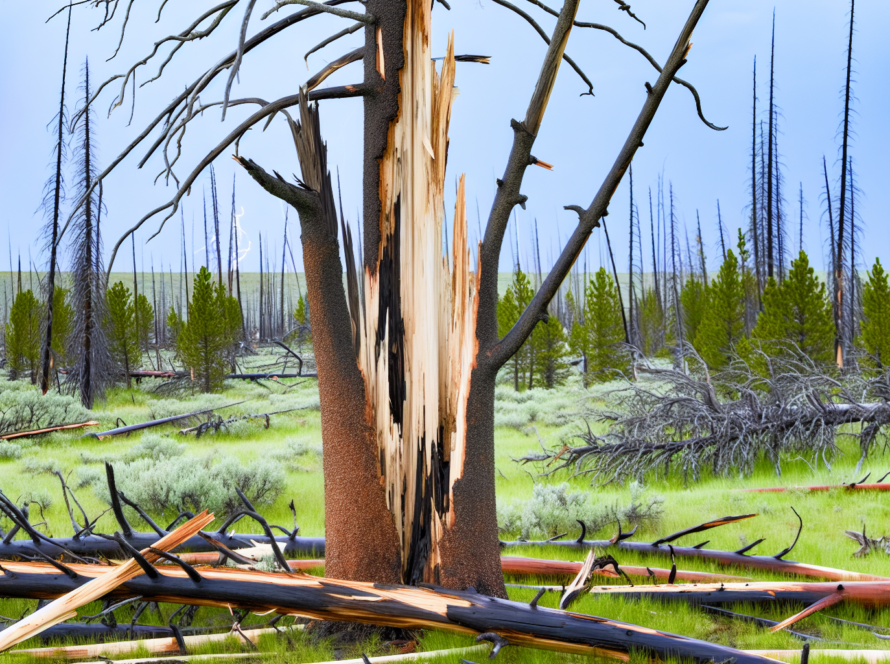Need to know how to cut a vertical tree limb? Get ready to tackle the job head-on. This no-nonsense guide provides you with straightforward steps to accomplish the task with confidence. We’ll address the when, the what, and the how, ensuring your tree care endeavor is done right and done safely.
Key Takeaways
The best time to prune vertical tree limbs is during late winter or early spring before growth begins, avoiding rainy days to prevent disease and infestation.
Using the correct tools and safety gear, such as pruning shears for small branches and pruning saws for larger ones, is essential for effective tree limb trimming.
Assess limb health prior to cutting and follow the step-by-step cutting process correctly by locating the branch collar and making precise cuts to protect the tree’s health.
Identifying the Right Time to Trim Vertical Tree Limbs

One key factor to successful pruning is timing. The optimal time for cutting vertical tree limbs is during late winter or early spring before the growing season starts. Pruning during this period promotes vigorous new growth as temperatures warm. However, it is crucial to avoid trimming trees on rainy days to prevent infestation and the potential for disease in open cuts.
Pruning flowering trees during the dormant season minimizes the risk of tree disease and pest infestation.
Preparing to Trim: Essential Tools and Safety Gear

Trimming trees, which includes removing tree branches, requires not only the right timing but also the right tools and safety gear. For trimming small branches, pruning shears like bypass pruners are ideal, while bypass loppers are better for branches up to 2 inches thick. For larger branches, pruning saws are necessary.
In addition to these tree pruning tools, an orchard or tripod ladder is crucial for safely accessing and trimming large branches in higher areas, as well as managing the tree trunk.
Assessing Tree Limb Health and Necessity of Trimming
Before you start cutting away, it’s essential to assess the health of your tree limbs. Unhealthy tree limbs often exhibit the following signs:
Shedding twigs
Bark peeling off, suggesting issues with nutrient absorption
Cavities, cracks, and visible rot or fungus, which point to structural damage and possible health problems.
Step-by-Step Process to Cut a Vertical Tree Limb ->
Now that you’re equipped with the right tools and have assessed the health of your tree limbs, let’s delve into the step-by-step process of cutting a vertical tree limb.
Locating the Branch Collar and Bark Ridge
The first step in cutting a vertical tree limb is locating the branch collar and bark ridge on the tree branch. The branch collar is the slightly raised or swollen portion around the sides and bottom of the branch. The branch bark ridge, on the other hand, is the raised strip of bark on top of the branch where it joins the main parent stem or trunk of the tree. Properly identifying these features is crucial to ensure the health and safety of the tree branches.
Making the Initial Cut: Starting from the Bottom
After locating the branch collar and bark ridge, the next step is to make the initial cut. This cut should be made on the underside of the limb, around 6 inches from the branch collar, and should penetrate 1/4 to 1/3 upward through the limb.
Executing the Final Cut with Precision
Upon making the first two cuts, the final cut is the most critical to the tree’s health, especially when dealing with overlapping branches, broken branches, or dead branches. The final cut should be made just outside the branch collar without damaging it and at a 45-degree angle to prevent water accumulation.
Removing Larger Limbs: When to Call a Professional

While most trimming tasks can be performed by homeowners, there are cases when it’s best to call a professional. If tree limb removal involves heights, proximity to power lines, or risk to surrounding areas, it’s wise to consult a professional.
Post-Trimming Care: Protecting Your Tree’s Health
Once you’ve successfully pruned your tree, post-trimming care becomes crucial to ensure its health. Trees have developed effective mechanisms for sealing wounds with layers of callus cells, a process known as compartmentalization.
Pruning Tips for Specific Types of Trees
Different types of trees require different pruning practices. For instance, early spring is optimal for pruning shade trees, yet certain species like maples may bleed sap during this season, making late spring preferable for them.
Summary
In conclusion, trimming vertical tree limbs is not as intimidating as it might initially seem. With the right timing, tools, safety gear, and techniques, anyone can maintain their trees effectively.
Frequently Asked Questions
Should vertical branches be pruned?
Yes, vertical branches should be pruned for reasons such as cracked or over-sagging limbs, and decaying or dead branches. This helps maintain the health and aesthetics of the tree.
How do you trim a tall tree yourself?
You can trim a tall tree yourself by following these steps: Place a ladder under the tree, climb up and attach a safety harness, use pruning clippers and a pole to remove damaged or overgrown branches, and avoid trimming branches that are too high or growing at sharp angles.
What are the 5 rules of pruning?
When pruning, follow the 1/3 rule, prune when trees are dormant, remove problematic branches first, make appropriate cuts, and maintain the correct height. It’s important to know when and where to cut, and to prune regularly in order to ensure healthy tree growth.
When should I call a professional to trim tree limbs?
You should call a professional to trim tree limbs when the task involves heights, proximity to power lines, or a risk to surrounding areas. It’s crucial to ensure safety in such situations.




